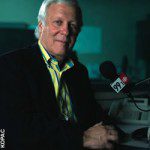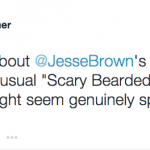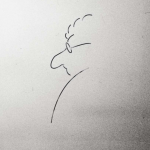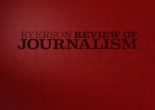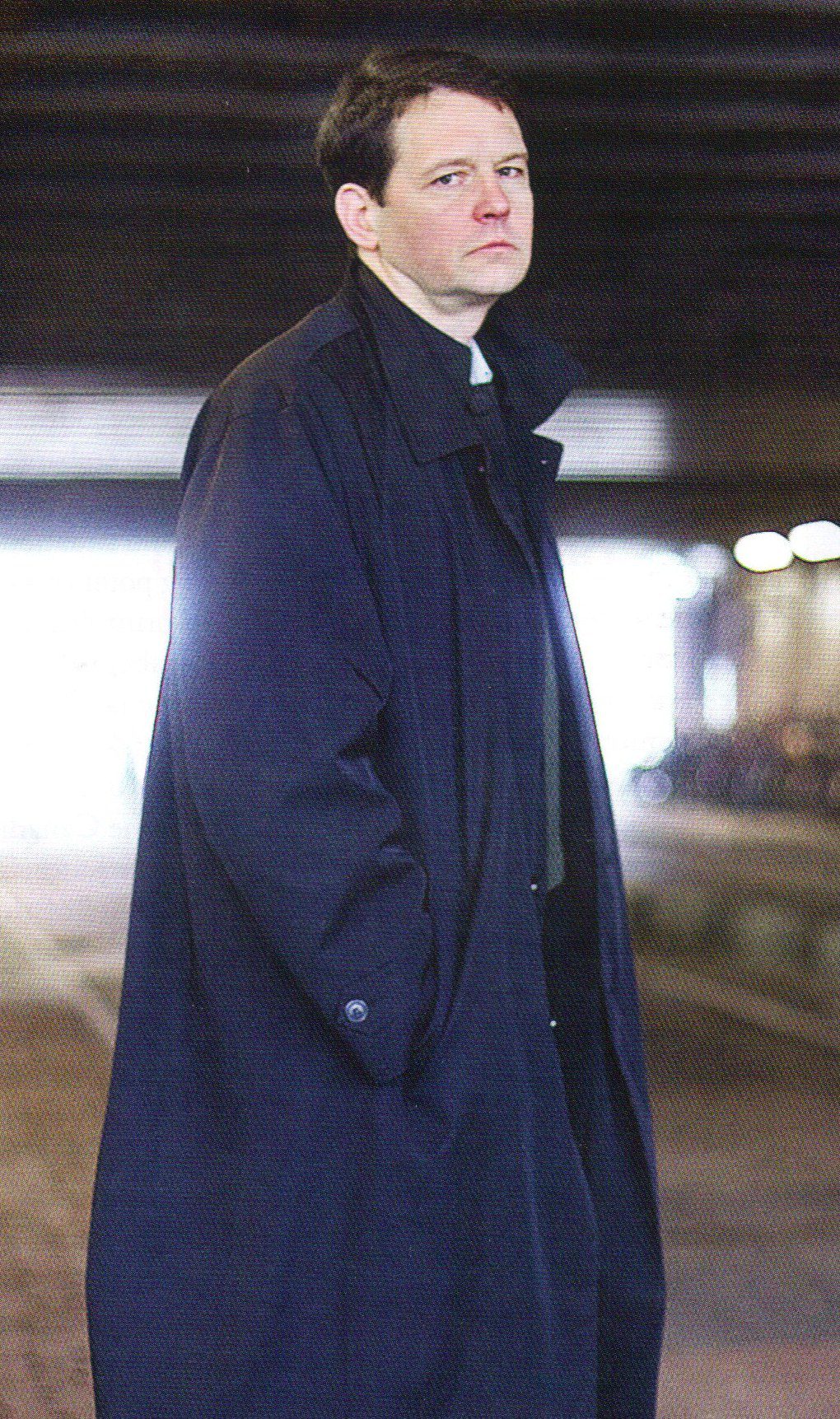The “Gee Whiz” Effect
Bob McDonald and his Quirks & Quarks colleagues cover science with infectious enthusiasm. It's a 32-year-old formula that still offers lessons on how to make difficult topics compelling
The toys look like muses. They line the office partitions, overlooking producers at their desks in this third-floor corner of the Canadian Broadcasting Centre: a small dinosaur, a baseball in a case, an uncompleted Rubik’s Cube, a shot glass, a tiny model space shuttle, two snow globes, a Pez dispenser, a model of an atom particle holding an egg, a mini basketball net, Albert Einstein and Sigmund Freud action figures, and seven identical yo-yos in various colours.
On Monday morning at 9:15, the muses watch Jim Handman — a short, bearded man with a cocky smile and a quick, perky stride — senior producer of CBC Radio’s Quirks & Quarks, meeting with colleagues Jim Lebans and Pat Senson. The three men sound like teenaged science geeks, swapping stories of new inventions and discoveries and talking excitedly about what to put on this week’s edition of the national science show that covers everything from dark matter to dinosaur sex.
Before each week’s pitch meeting, the producers go through advance copies of Nature and Science cover to cover and scour more than 50 smaller journals and magazines to come up with the important news and the smaller, “quirkier” stories that have made the show famous. When Senson read about an invisibility cloaking device in Science, he knew it would be the perfect fit. As well as being a significant development, the idea of wearing an invisibility cloak is just plain cool. And it’s the cool stories that really get the producers — and the audience — excited.
Since the cloaking device is international news, Quirks won’t be the only outlet covering it — Discovery Channel Canada, CTV’s national news and even CBC.ca will be running stories on it. But the competition doesn’t worry Handman because rather than just reporting on science news, Quirks adds to it.
Besides, other shows don’t have host Bob McDonald. “He asks the questions that the listener wants to ask,” says Handman. McDonald represents the average Quirks fan: educated, but with no formal scientific training. After 15 years, McDonald combines the knack of a storyteller with a giddy, child-like love of science. “He invokes that ‘Gee Whiz’ aspect,” says Tim Lougheed, president of the Canadian Science Writers’ Association, who adds that McDonald never has an air of superiority. He’s like someone in Tim Hortons who’d say, “Hey, did you hear that they invented an invisibility cloak? Cool, eh?”
Even after 30 years, the ‘Gee Whiz’ of the show gives something unique to listeners. “You can get the science news in the newspaper,” Handman says. But the mainstream media focuses on how science might affect their audience: how medical advances will lead to a longer life, how a technological development will increase safety in the home, what climate change will mean for the ski industry. Meanwhile, Quirks is doing something different — it’s putting the wonder back into science — even if it means defending the show’s newsworthiness once in a while. Although reporting on science for science’s sake, telling a story just to say, “Cool, eh?” is what Quirks does best, it’s something others rarely do at all. And while it does face some critics, Quirks is too busy combining meticulous research, years of experience and genuine excitement to care.
Tuesday, 10:30 a.m.
For the invisibility cloaking device story, Senson went straight to the source: David Schurig in North Carolina. Producers always do pre-interviews with scientists to clarify what the story is actually about, determine how they will sound and discover what questions elicit the most interesting answers. At this point, Quirks becomes “Scientific Canadian Idol” — of about 15 pre-interviews, a third to a half won’t get past this stage. Among the cuts are scientists who can’t speak in layman’s terms, are boring or have difficult-to-understand accents. When the story is fabulous but the guest is
boring, or the story is marginal but the guest is fantastic, the producers will take a chance. But as on Idol, it might not make it past the next stage.
On its first episode, which aired October 8, 1975, Quirks explored a possible link between hair dye and cancer, and discussed chemical warfare. The show’s creator, Diana Filer, hired David Suzuki to be its first host after seeing him speak in Toronto. Suzuki, who later founded the David Suzuki Foundation, an environmental organization, and now hosts CBC’s The Nature of Things, promised to look at what excites and worries scientists, and told his listeners, “You don’t have to have a PhD to be interested in
science.” He also pointed out that, “You only have to look around your home to see that
science affects you in all sorts of ways in your daily life.”
When Jay Ingram took over as host in 1979, he wanted to make science even more popular, but recognized that being knowledgeable about the subject wasn’t enough to keep the audience interested. “Just because you express science well doesn’t mean they’ll care,” he says. He saw himself as the mediator between scientists and the public, asking the right questions to get the good answers. “I was not an editorial voice,” he says. Ingram continued to popularize science after he left the show, and now hosts Daily Planet, a science show on Discovery Channel Canada.
Quirks quickly became a favourite on the CBC Radio line-up. By the time McDonald came along in 1992, the show had won over 20 awards from the Canadian Science Writers’ Association, the International Radio Festival of New York and others. It had become a reputable venue for scientific discussion. But the discussion changed over time. McDonald remembers the generalized nature of science reporting when he was a child. “It was about neat experiments; isn’t the universe wonderful, and we’re going to the moon… The universe was open to us and we were going to do everything.” However, as the environmental movement gained strength in the 1960s and ’70s, science journalists began to shift from optimism to concern with the social and environmental implications of scientific discoveries. People reporting on science were no longer blind to the fact that these advances had repercussions. “It’s changed from neat things that people in white coats do in the laboratory, or daredevils do when they get on rockets, to things that we eat,” says McDonald. “So we’re now talking about science that’s affecting genetically-modified foods, or pills that we’re popping for our headache. And we’re saying, ‘Is that safe? Should we go down that road?’”
Wednesday, 10 a.m.
The uniform of choice for CBC’s resident “Science Guy” is a brightly coloured dress
shirt tucked into fitted jeans. McDonald walks around with a worldly swagger and an amiable grin made even more child-like by his crooked teeth. On his desk, a tray labelled “Quirks & Quarks Research” holds a pile of papers higher than his computer, leaning dangerously to one side and threatening to crash down on an antique teapot sitting nearby.
At university McDonald studied English and philosophy, but dropped out and dove into science in 1973 when he got a job at the Ontario Science Centre, which was looking for people to stand in front of a big audience and have fun with static electricity. “That was an opportunity to pursue two of my joys in life, performing and science,” says McDonald. His lifelong fascination with space exploration is obvious in his eyes, the flicker in his eyebrow and the twitch of his smile as soon as someone says “black hole.” In the ’70s he travelled to the Jet Propulsion Laboratory in California to watch robots land on Mars. McDonald gained media access by writing a request on Science Centre letterhead, but paid his own way. He later returned as a proper member of the press — all expenses paid — for missions to Saturn. And Uranus. And Neptune. “I’ve witnessed the primary exploration of our solar system,” says McDonald, his eyes lighting up. “Hitching a ride on Magellan’s ship, just to be there when they said, ‘Land ho!’”
So McDonald became a space expert, and when the media — including Canada AM and Global Television — called the Science Centre asking if anyone knew about Mars, he’d pipe up. “They all said, ‘Wow, you’re really great on camera, you wanna come back?’” In 1979, when he was 28, McDonald left the Science Centre to be a freelance writer. That year, he joined a group of people heading to Tanzania, to see an eclipse of the sun. “I saved up my pennies,” says McDonald. “But I thought, ‘Gee, why go half way around the world and come back the same way?’” So he took a half-year trip around the world and wrote a book in 2000 — Measuring the Earth With a Stick: Science as I’ve Seen It — about his travels. “The world is an amazing place,” he says. “And when you have a little bit of science behind you, you see more than just mountains and valleys.”
These days, McDonald is on call at CBC’s The National to explain science to Peter Mansbridge in a minute and a half. Mansbridge will tell others, “Do a Bob McDonald for me!” when he wants a clear explanation. McDonald also does documentaries for The National, and has a weekly spot on CBC News: Morning. Then there’s Heads Up!, a TVO show for children about space and the universe, which he writes and hosts. McDonald’s upbeat personality also landed him on the lecture circuit, where he is in high demand to speak all over the country. But science is not just a career for McDonald, it’s a way of thinking. “It’s kinda trippy, you know,” he says. “People take drugs to alter their perception of the universe, but science can do that as well. It makes everything you know much more interesting.”
Thursday, 10:30 a.m.
When McDonald arrives on Wednesday and Thursday mornings — he’s only at the show from Wednesday to Friday — he begins interviewing the discoverers, inventors and other movers and shakers of the science world. This is the next level of cutting: of the seven interviews they usually record, four or five get on the air. The studio is colourful and well-decorated: Genesis and Contact movie posters, a spaceship model, a photograph of Earth from space, and a cut-out of an astronaut with the word “lunch” hand-written in a voice bubble taped to its head. But the afternoon starts with technical problems. The system that allows them to interview scientists all over the world is acting up. McDonald and Senson keep losing the scientist from North Carolina — Schurig and his magical cloaking device, the top story of the week.
Now the technical problems are solved, but the nervous guest is shuffling his papers. “I know it’s difficult, talking to a disembodied voice,” says McDonald. “Just talk to me. You don’t need anything.” During the interview, Senson and McDonald ignore the new studio system that allows them to communicate via computer screens — they’ve got the hand signals down to an art.
McDonald also has chatting with his guests down to an art. “I don’t claim to be a scientist, and I feel closer to the listeners than to the scientists,” he says. “But I’ve been doing this long enough that I can speak the language.” Smiling, he mentions a phrase that’s become somewhat famous on the show: Let me see if I’ve got this right. If he doesn’t understand something, he asks. There’s no ego here.
And if a guest is too deep into scientific lingo, McDonald just stops him. “I’ll say, imagine you’re talking to your dentist. Your dentist is well-educated, but not in your subject. So how would you explain it if you were lying back in your chair before they’re going to put the novocaine in?” But McDonald also knows that clarity doesn’t mean stupidity. “I don’t like the term ‘dummy down,’” he says. The show’s approach: start at the beginning and move to an end, and for God’s sake, be entertaining.
The tricks seem to work, because scientists often come up to McDonald at seminars and conferences to say how much they enjoy Quirks. The show also gets a lot of feedback from scientists who say that they aren’t afraid to be a guest. That’s a sure sign of credibility — and a rarity given that the relationship between the scientist and the journalist has always been uneasy. “There can be tension there,” says McDonald. “Although it’s not usually between science journalists and scientists, it’s between news journalists and scientists. News journalists were assigned a science story and they don’t know the science, so they get it wrong or they misinterpret it or they’ll take a spin on it that the scientist doesn’t like.” The media too often want every story to be black and white and the headline to be: “Cure for cancer!” Handman says the real headline should be: “Maybe sometime there might be something!” With little science training and pressure from their editors, many reporters are at a disadvantage. This leads to what Handman calls the three sins of science reporting: simplifying, misleading and over-hyping. Even those journalists who do under- stand the science can’t always cover stories the way they want. “I have to sell it like it’s an adventure story, a disclosure story, an exposé, a personality story,” says Toronto Star science reporter Peter Calamai, who also points to the domination of medical stories today, because of how they directly affect the audience. “What I sometimes get back from editors is, ‘Don’t put too much science into it.’”
While some scientists still feel that journalists don’t understand the material — which can make the scientist look bad or skew the findings — many scientists have a condescending attitude toward the public and can’t (or won’t) speak simply. Handman has a comic strip taped up in one of the editing rooms: “Layman’s terms?” the befuddled scientist says to the reporter, beside a chalkboard covered in numbers. “I don’t know layman’s terms!” But publicity-hungry universities and research centres are pushing their scientists to talk to more reporters in order to gain recognition and funding. “They have no choice,” says Jean-Marc Fleury, executive director of the World Federation of Science Journalists. “They have to interact with them.” But as science has become more of a business, it’s harder for journalists to know if they’re speaking to a scientist, a businessman, a promotional manager or all of the above. “Many of them,” says Handman, “have an agenda.”
A growing but still wary trust has emerged between scientists and journalists. Calamai sees a generational change in the scientific community, making way for younger, media-savvy scientists. Says McDonald: “I think the [relationship] between the scientist and journalist has become copasetic because they realize that we represent them.” He adds, “And we are actually trying to make them look good.”
Maybe too good. Quirks often reports on science simply because it’s “cool.” But some observers wonder how far McDonald’s enthusiasm can take the audience. “They have
good ideas, they have good execution, they’re curious as hell,” says Calamai, but he’d like to see McDonald spend more time analyzing the news, instead of just being in awe of it — a criticism he usually holds for most science broadcasts. He worries that shows such as Quirks, which need high-quality guests, may stay away from aggressive questioning so they don’t scare them away. “They really are in trouble if they can’t get a voice,” he says. “They’ve gotta have somebody in the studio.” Handman counters that when a story is particularly controversial, the show will cover it with a documentary segment. The problem, says Calamai, is that every story is controversial. “There’s always somebody who says, ‘Well, that’s very interesting but that does not prove ‘x,’ or that doesn’t show ‘y,’ or they haven’t eliminated ‘z.’”
Friday, 1 p.m.
In the studio, McDonald wears a green shirt and looks slightly disheveled. The animated, fidgety man who was recording interviews yesterday is now calm and meditative as he
listens with his arms crossed and his eyes down, a veteran at hearing his own voice.
Thanks to podcasting, more listeners are hearing McDonald’s voice. Handman says Quirks has frequently been one of the top 10 shows on iTunes since the podcast started in 2005. Though the CBC is still working out the methodology for measuring online audiences, Handman estimates that podcasting adds 25,000 listeners to the show’s weekly audience, which is already at around 443,000. “How is that possible?” says Handman, laughing. “Who are these people?”
When McDonald does the show, he imagines those people are just like him. “Really, I’m the audience,” says McDonald. “I’m trying to understand it. And I have found that if I understand it, then our audience understands it too.” In terms of what he’s trying to understand, the name Quirks & Quarks says it all. The big, serious stories are the quarks — heavy, fundamental stuff, crucial to science. But the quirks — fun, peculiar, quirky stories that amuse both the producers and the audience — are also part of the show’s success. One show, McDonald will talk about fetal surgery; another show, penis preference in mosquitofish. And yet, the “quirkier” stories aren’t presented as novelties. Dr. Marlene Zuk, for example, works with the reproductive behaviours of animals and was pleased that the show didn’t make a joke of her work.
While the “science for science’s sake” approach raises questions from both the scientific and journalistic communities about the newsworthiness of the show, McDonald and Handman are confident they have the right formula, and their guests agree. John Hoogland, who appeared on Quirks last fall to discuss prairie dogs and their predators, said that he loved McDonald’s let-the-scientist-speak method — and not just because he likes to hear himself talk. “They let the investigators do the talking,” he says. The listeners also seem to like it: Handman gets emails from them saying, “I just heard about that new science development in the news. I can’t wait to hear Quirks do it!” Lougheed agrees that Quirks does something different, especially when it covers news like the invisibility cloak. Reporting raw scientific data is easy, he says, but Quirks is telling a story. And Lougheed says the ‘Gee Whiz’ approach is deceptive. While it seems as though McDonald is dumming down the story, he’s actually just making it more accessible. “You’re pulled into it before you realize it’s complex,” Lougheed explains.
Saturday, 12:06 p.m.
Just after noon, McDonald’s steady, upbeat voice rings through radios across Canada. When listeners hear Schurig going over the fundamentals of invisibility, they can’t imagine McDonald sitting in the studio, trying in vain to hear the scientist’s voice. They can’t hear their host giggling with his hand over the microphone after trying to loosen Schurig up by enthusiastically comparing the invention to a Star Trek device and getting an unenthusiastic monotone “yes” as a response. They can’t see McDonald furrowing his brow, twirling a pen and darting his eyes around the room as though he’s watching a tennis match. But what his listeners can hear is McDonald’s curiosity, his sincere wonder and his concern that they think the invisibility cloak is as cool as he does.
When Quirks began, the human genome project didn’t exist. Most of the planets hadn’t been explored. Scientists didn’t know that the universe was speeding up. “We’re developing these incredible tools,” says McDonald, his eyes lighting up. “We can see to the edge of the universe, we’ve got these big colliders that are ripping atoms apart, we’re manipulating DNA, manipulating life, we’re going back in time with the dinosaurs. It’s an astounding time of discovery.” His listeners need to know about science not just because it could affect their lives, or their children’s lives, but because it’s an essential part of human knowledge and modern culture. As Ingram notes, “Saying you’re cultured without a science background? That’s appalling.”
McDonald hopes that his listeners are not just intellectually curious, but are interested in understanding the world around them in a different way. “We have our five senses, which actually aren’t that good when you try to look at the world,” says McDonald, sitting in his studio, looking around at his muses. “The perception of the world that our five senses give you is wrong. Science to me is like another set of senses.”
Paige Magarrey was the Visual Editor for the Spring 2007 issue of the Ryerson Review of Journalism.





